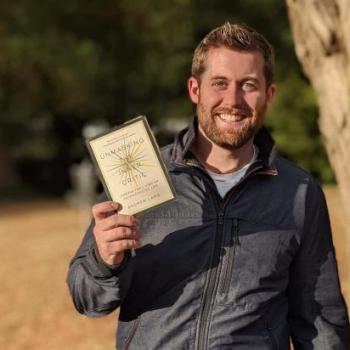
Most of us have an inner critic of some kind.
For some, it is a loudmouth inside us yelling about everything wrong with us; for others, it is a whisper in the silences; and for even others, it doesn’t have a voice – it speaks through our bodies and through our muscles.
When I think about why I don’t go to church – and why 61% of my fellow millennials don’t either – it’s largely because the Church has failed to engage seriously in spiritual or personal formation work. They’ve settled for Bible studies alone, without training church-going participants in the spiritual tools that may help enrich our lives.
I’ve heard them say plenty about doctrine and dogma but have rarely seen them seriously provide the tools and training to face my own inner critic, my own sense of worth, or how I can best engage with my communities with a non-colonizing mindset.
By turning its back on the actual tools that cultivate change, the Church – both conservative and progressive – has fully given itself to a theology of Empire and status quo.
The Church itself, along with the individuals that fill it, needs to engage in inner critic work.
Understanding the Multifaceted Nature of the Inner Critic
So what is the inner critic?
Rather than a singular voice, our inner critics reveal themselves through a multitude of narratives and constrictions. The inner critic is not a monolithic entity that lives inside us; it is a label we place on the many different ways in which parts of us attempt to protect us. Those of you who are familiar with Internal Family Systems will understand this immediately: the inner critic is a function of our “protector parts,” impacting us through self-talk, muscle tension, feelings of social isolation, and disconnection.
When we experience our inner critic moving, but lack the tools to sit with it and be gentle with it, it will be empowered to run rampant within us.
The Church is missing out on an opportunity to speak to a very real experience so many of us have; this is a chance for deep, spiritual work. The work of unmasking the inner critic is about excavating our own inherent dignity: what Richard Rohr calls our immortal diamond and Thomas Merton calls the “true self.”
If the Church began to engage in an intentional way with people’s inner critics, teaching healthy tools like somatic work and shadow work, it would truly be creating transformed people.
Embracing the Nuances of the Inner Critic
It’s so important, I’ll say it again: the first step in engaging with the inner critic is letting go of the misconception that it is an external entity.
Instead, we must understand that the inner critic is an inherent part of ourselves, seeking to protect us in its own unique way. By embracing the subtleties and complexities of its existence, we can develop a more compassionate and exploratory approach to understanding our inner landscape and soulspace.
Because it is a part of us, it is vital we understand where the inner critic comes from.
The inner critic emerges in most of us as a protective mechanism in response to the challenges, traumas, and societal pressures encountered in an imperfect world. While these beliefs or instances of negative self-talk or bodily constrictions may have initially served as shields, over time they end up hindering our deep connection with the Divine – because they hinder our deep connection with our own souls and inherent dignity.
There is such an opening for churches here that goes far beyond teaching doctrine, belief systems, how to read the Bible, and short “dipping-the-toes-in” studies of prayer practices.
Embarking on the Path of Inner Work
Rather than seeking to eradicate the inner critic entirely, the journey towards healing lies in gentle, consistent, and intentional inner work.
Here are a few resources pastors and lay leaders can use to get started.
- Unmasking the Inner Critic: Lessons for Living an Unconstricted Life, by Andrew Lang (book)
- Immortal Diamond, by Richard Rohr (book)
- Shadow Work: Getting Off Autopilot and Learning to See Deeply (course)
- The Wednesday 1-2-3 (weekly email with inner work teachings, questions, and resources)
- Bring me in for consulting or to lead my Shadow Work course with your church
Want practical inner work teachings and resources every week?
Join 471+ folks receiving The Wednesday 1-2-3, my weekly email offering one contemplative and embodied teaching, two questions for your inner work, and three resources to go deeper.













